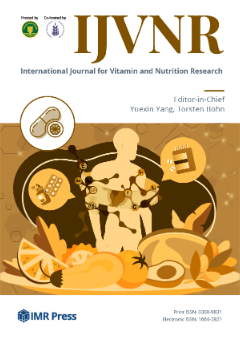International Journal for Vitamin and Nutrition Research (IJVNR) is published by IMR Press from Volume 95 Issue 1 (2025). Previous articles were published by another publisher under a hybrid publishing model, and they are hosted by IMR Press on imrpress.com as a courtesy and upon agreement with Hogrefe.
Sources of vitamin D for humans
Both vitamin D insufficiency and deficiency are now well-documented worldwide in relation to human health, and this has raised interest in vitamin D research. The aim of this article is therefore to review the literature on sources of vitamin D. It can be endogenously synthesised under ultraviolet B radiation in the skin, or ingested through dietary supplements and dietary sources, which include food of animal and plant origin, as well as fortified foods. Vitamin D is mainly found in two forms, D3 (cholecalciferol) and D2 (ergocalciferol). In addition to the D3 and D2 forms of vitamin D, 25-hydroxy vitamin D also contributes significantly to dietary vitamin D intake. It is found in many animal-derived products. Fortified food can contain D3 or D2 forms or vitamin D metabolite 25-hydroxy vitamin D. Not many foods are a rich source (> 4 μg/100 g) of vitamin D (D represents D3 and/or D2), e.g., many but not all fish (5–25 μg/100 g), mushrooms (21.1–58.7 μg/100 g), Reindeer lichen (87 μg/100 g) and fish liver oils (250 μg/100 g). Other dietary sources are cheese, beef liver and eggs (1.3–2.9 μg/100 g), dark chocolate (4 μg/100 g), as well as fortified foods (milk, yoghurt, fat spreads, orange juice, breakfast grains, plant-based beverages). Since an adequate intake of vitamin D (15 μg/day set by the European Food Safety Authority) is hard to achieve through diet alone, dietary supplements of vitamin D are usually recommended. This review summarizes current knowledge about different sources of vitamin D for humans.

